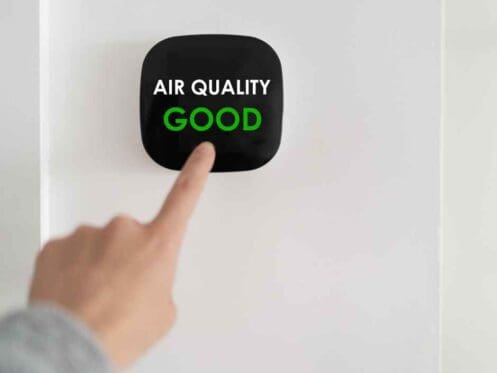Maintaining good indoor air quality is crucial for the health and comfort of everyone in your home. Knowing how to test the air quality can help you identify potential issues and address them before they become serious. This guide will walk you through simple steps to test indoor air quality and explain why it’s important to keep your indoor environment clean and safe.
What is Indoor Air Quality?
Indoor air quality (IAQ) refers to the air quality within and around buildings and structures, especially as it relates to the health and comfort of building occupants. Understanding and controlling common pollutants indoors can help reduce your risk of indoor health concerns.
Common Pollutants
Some typical indoor pollutants include mold, pollen, pet dander, household chemicals, and gases like carbon monoxide and radon. These can come from a variety of sources and can affect the air quality negatively.
Testing Your Indoor Air Quality
Visual Inspections for Mold and Mildew
Start by visually inspecting your home for signs of mold and mildew, especially in damp areas such as bathrooms, kitchens, and basements. Mold spots or a musty smell are clear indicators that your air quality could be compromised.
Use of Air Quality Monitors
Invest in an air quality monitor to keep track of the levels of various pollutants and conditions in your home, including dust, chemical vapors, carbon monoxide, humidity, and temperature. These devices can provide an ongoing assessment of the quality of the air in your home.
Radon Testing
Radon is a colorless, odorless gas that can pose serious health risks if it accumulates indoors. Radon testing kits are available for purchase at hardware stores and online. It’s a good practice to test at least once a year.
Carbon Monoxide Detectors
Ensure that your home is equipped with carbon monoxide detectors on every floor, especially near bedrooms. These devices can help alert you to the presence of this deadly gas.
Professional Indoor Air Quality Assessment
For a comprehensive evaluation, consider hiring professionals. They can conduct a detailed assessment of your home’s air quality and offer solutions for any issues they find.
Improving Your Indoor Air Quality
Routine Cleaning and Maintenance
Regular cleaning and maintenance of air ducts, filters, and vents can significantly improve your indoor air quality. Replace air filters regularly according to the manufacturer’s guidelines.
Control Humidity Levels
Keeping indoor humidity levels in check (ideally between 30% and 50%) helps prevent the growth of mold and mildew. Use dehumidifiers and air conditioners to manage humidity effectively.
Increase Ventilation
Increase the flow of outdoor air into your home by opening windows and doors when weather permits or by using exhaust fans that vent outdoors.
Improve Your Indoor Air Quality With Charleston Heating & Air
Testing and improving indoor air quality should be a priority for every homeowner. By following these steps and seeking professional help when needed, you can ensure a healthier living environment.
Concerned about your home’s air quality? Charleston Heating and Air offers expert indoor air quality improvement services in Charleston. Ensure your home is safe and comfortable by scheduling a professional assessment today. Call us or visit our website to learn more about our services and how we can help you breathe easier.

